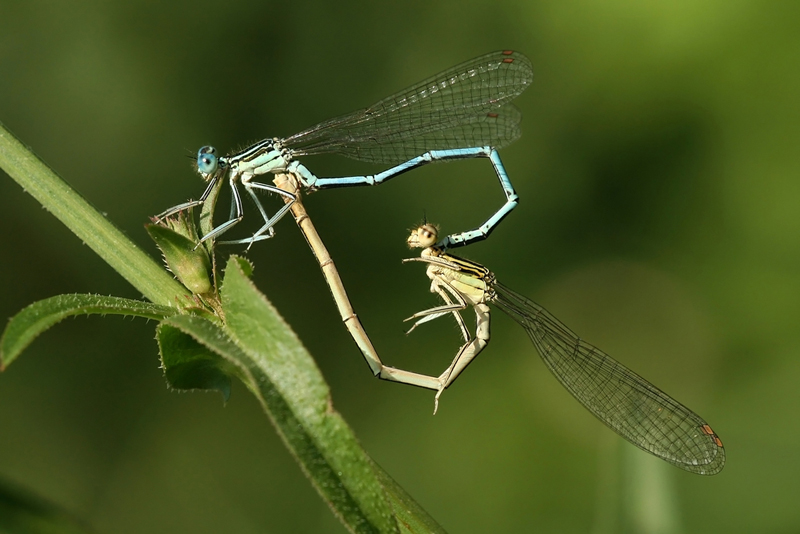Animal Sex: How Dragonflies Do It

Dragonfly and damselfly sex is a very conspicuous event, easily recognized by the heart-shaped "wheel" formation of mating pairs. But what else is involved in the mating behavior of these insects?
Dragonflies and damselflies are closely related insects, which both belong to the insect order Odonata. The two insects display a number of subtle differences, most noticeably their size and rest orientation. That is, damselflies are small, slender and hold their wings over their backs while perching; dragonflies are larger than damselflies and keep their wings outstretched while at rest.
The insects share similarities in some of their reproductive behaviors, but the mating systems of damselflies are more varied, explained Rhainer Guillermo-Ferreira, an entomologists at São Paulo State University in Brazil. [Photos: Dazzling Dew-Covered Insects]
Male dragonflies are very territorial and will ferociously defend their little mating area from other males. During battles, they will grab and bite each other's wings and head, inflicting potentially fatal wounds.
Females visit the males' territories along ponds, rivers and streams, and mate with the best fighters. "They have no special behaviors, such as courtship or dancing," Guillermo-Ferreira told Live Science.
Some damselfly species also set up territories, but others have different ways of going about things. The males of some species fly around and search for potential mates. The most reproductively successful males are generally those that are the best fliers and searchers, Guillermo-Ferreira said.
Some other damselflies sport very colorful wings, which they use both to intimidate other males and to entice females. A male "dances" for a female by showing off his wings and zipping along the water, a behavior that helps to communicate his quality and the quality of his territory.
Get the world’s most fascinating discoveries delivered straight to your inbox.
To mate, the male first grabs a female by the back of her neck with claspers at the end of his abdomen — these structures actually fit into species-specific grooves in the female. From here, the pair can fly around together in tandem. If the female is sexually receptive, she will lift her abdomen up to bring her "vagina" in contact with his "penis," allowing the male to transfer his sperm.
In some species, the pair will remain in this wheel position for only a minute. Others, however, may stay in formation for several hours, while the male tries to use spoonlike structures on his penis to scoop out any sperm from other males the female may already have in her.
After copulation, the male may immediately release his mate and fly away, or he may follow her around to guard her from other males while she lays her eggs in water. In some species, the pair will stay in tandem during the whole egg-laying process.
Eggs laid, the odonates will go on to reproduce a few more times, until they die of old age a month or so later.
Follow Joseph Castro on Twitter. Follow us @livescience, Facebook & Google+.

